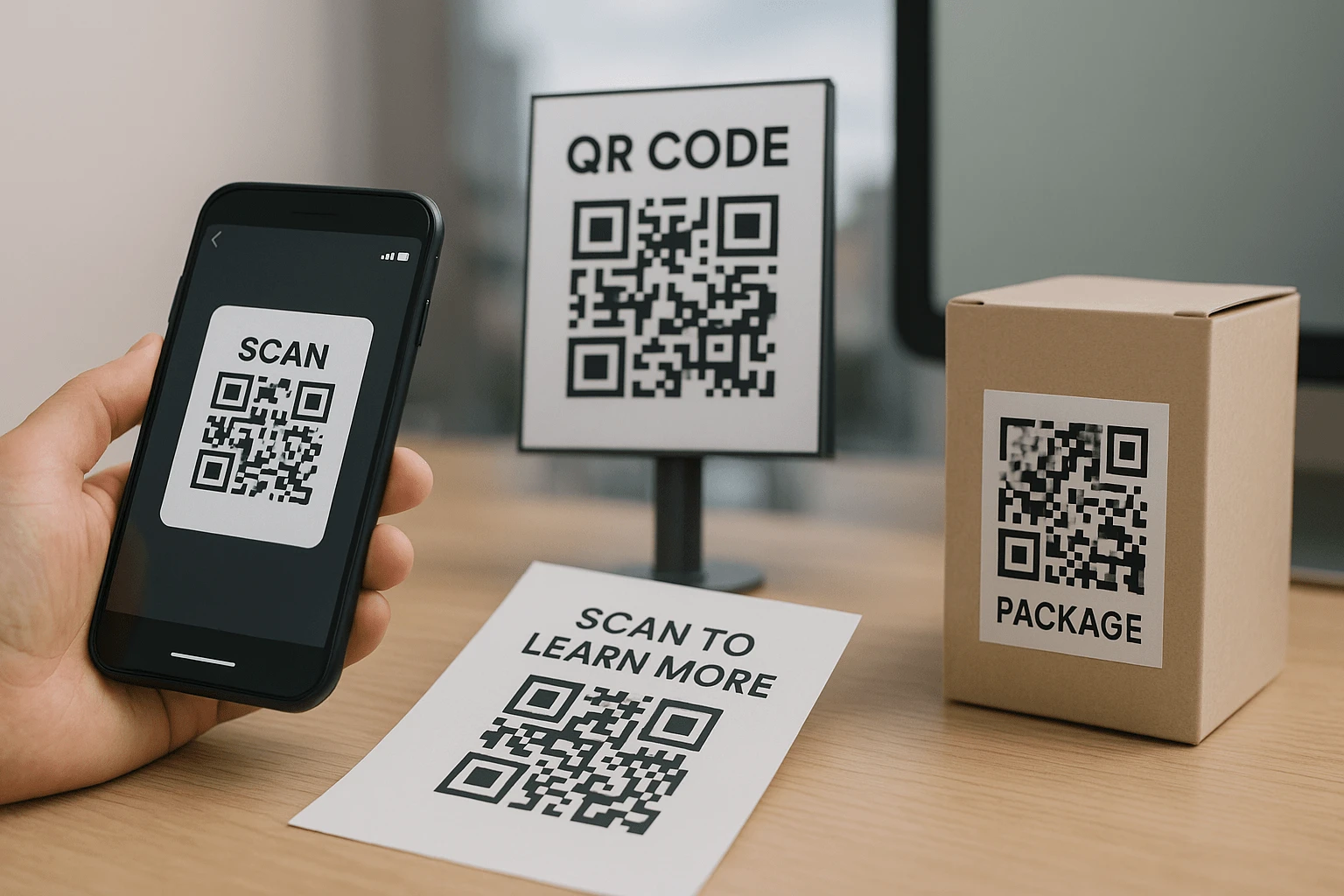
How to Use QR Codes in Offline Advertising: Flyers, Billboards, Packaging
Just a few years ago, print advertising—flyers, billboards, packaging—was purely visual. It couldn't provide feedback, didn't track anything, and honestly, often got lost in the surrounding noise. But today, things are different.
Now, every printed medium can become a digital gateway. How? Thanks to QR codes. One scan—and someone from the street is already on your website, in a feedback form, on TikTok, or even inside your CRM.
A QR code isn’t just a pixellated image. It’s a tool that connects offline and online, analytics and action, speed and convenience.
In this article, we’ll show how brands, retailers, coffee shops, event organizers, and even local stores use QR codes in their printed advertising. And most importantly—how to do it effectively: without mistakes, with analytics and creativity.
If you’re looking for ways to increase the ROI of flyers, storefronts, or packaging—the following information is exactly what you need.
What Makes a QR Code Effective Specifically for Offline?
Online advertising has an advantage—it's clickable. One tap and you’re on the page, the form, or in the cart. What about offline? Someone sees your ad on a flyer, billboard, or packaging—but to take action, they have to... enter a URL by hand? Remember the brand name? Search Instagram?
This is where the QR code serves as a bridge. It doesn’t replace the ad—it makes it interactive. One scan and the person is exactly where you want them: your website, chat, or app.
Effectiveness isn’t just about convenience. The QR code removes the invisible barrier between “I’ve seen it” and “I’ve done it.” In the subway, on the street, near the cashier—people don’t have time to enter addresses. But scanning something interesting—they can do right now.
Plus, it’s not only about access, but also measurability. Every QR code is also an analytics point: you see how many people responded to a flyer, from which cities they scanned the packaging code, and when the billboard brought the most visits.
And most importantly: there’s no such thing as an “accidental action” with a QR code. The person points their camera consciously. It’s a click with intent. And intent is already part of the funnel.
That’s why an effective QR is not just technology. It’s a combination of context, action, and data—in the simplest possible form.
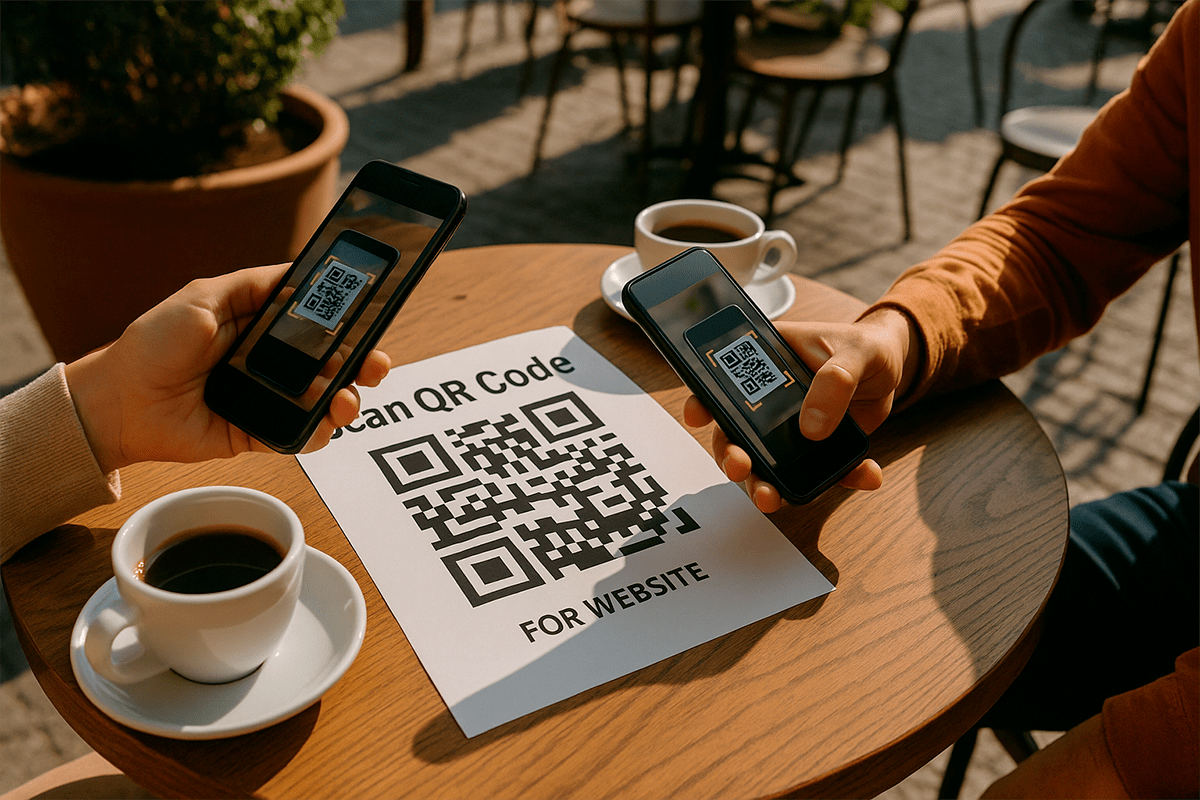
Why QR Codes Have Become the Cornerstone of Print Advertising
A silent poster. A flyer sitting in a pocket. A label people just walk past. How many times has your print ad worked in vain? And not because of bad design or a weak slogan, but simply because it’s one-sided.
This is the main limitation of offline media. You show something, but you don’t know if anyone saw it or did anything with it. You can only guess: “Maybe someone responded.” But without numbers—all this is just intuition.
That’s why the emergence of QR codes wasn’t just a convenience—it was a strategic breakthrough. They add what print needs most: interaction. Scanning is an action. And action means analytics.
Imagine every flyer isn’t just a piece of paper, but a portal. Someone on the street sees a discount—scans it—and is already on your landing page. On the metro, a passenger sees a QR code—scans it—and reads the menu. At home, a buyer takes the packaging—and without entering an address, gets straight to the video instruction.
But the main point is not just convenience (though it really is convenient), but that you can now see: how many scans, where, from which cities, and which devices. You can measure the results. That’s something print advertising couldn’t do before.
And one more thing. Many people still think: the flyers are printed — and that’s it, no way back. But with a dynamic QR code, there is. You can change the link even after the flyers have been handed out. Switch from landing page to promotion, from pdf-instruction to video, from form to Instagram. All without reprinting.
That’s why today, an ad layout without a QR code is like a poster without a caption. It simply doesn’t work as it could. It doesn’t drive action, leave a trace, or show the way.
Where Exactly Should You Place QR Codes—and How to Do It Right
When we say “QR in print,” we usually imagine a classic discount flyer or a billboard with a call to action. But the range of carriers is much wider—from bottle labels to cash register receipts. And each of them has its own logic: different distances, different scenarios, different user expectations.
Let’s start with the most obvious—flyers and leaflets. Here, interaction happens up close, so the code can be small but must be easily visible. Ideally, place it at the bottom, closer to the center, where the eye usually stops at the end of reading. Be sure to add a short explanatory caption: “Scan to get a gift” or “Discount inside”. Without it, even the nicest QR code will simply be overlooked.
Next—packaging. Here, the code complements the product. It might lead to instructions, a video, a bonus program, or a contest. The key is to place it near the main label, where it’s visible. That’s where the buyer naturally looks. If the product is handled by hand—this is your chance to add a bit of digital right onto a physical carrier 📦
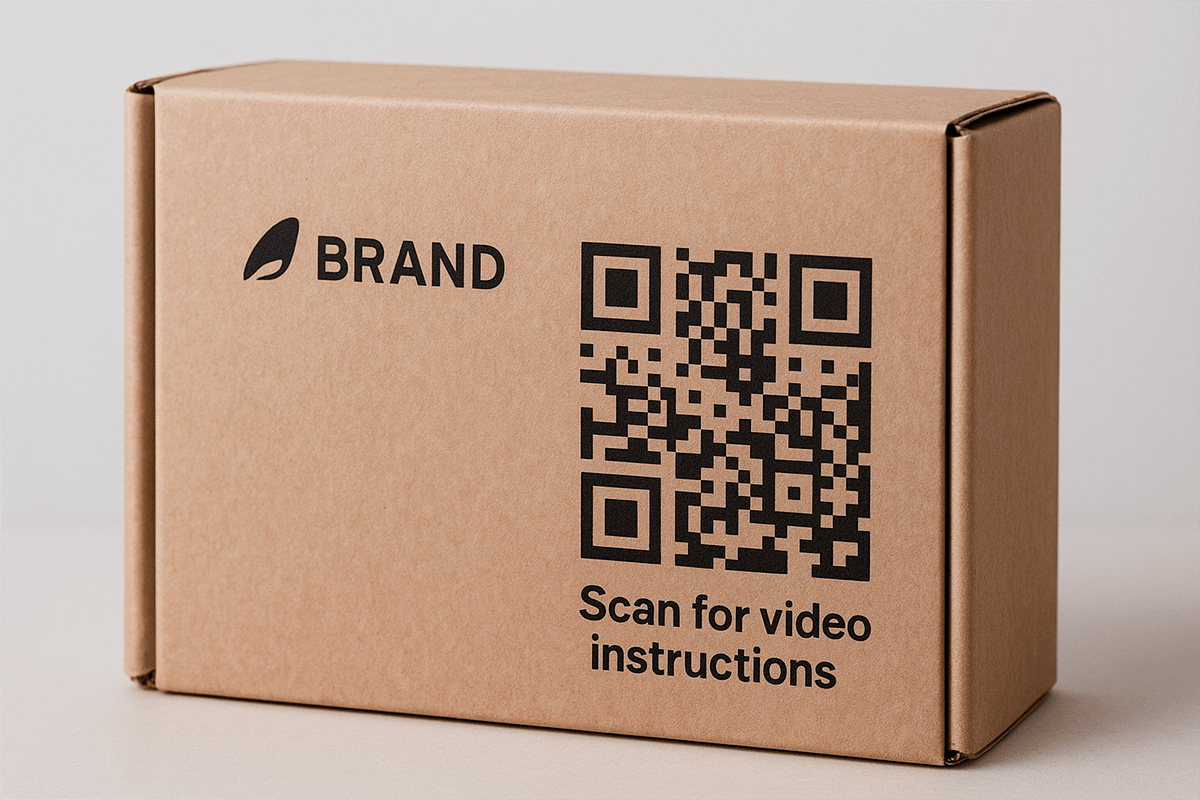
Billboards and citylights are another level. People may be moving or at a distance. So the code must be large enough, with good contrast, and ideally—with a clear call to action nearby: “Scan to get a promo code”. Don’t rely on a passerby’s intuition. Even in a big city, it’s best to test scanning from 3–5 meters before launching your campaign.
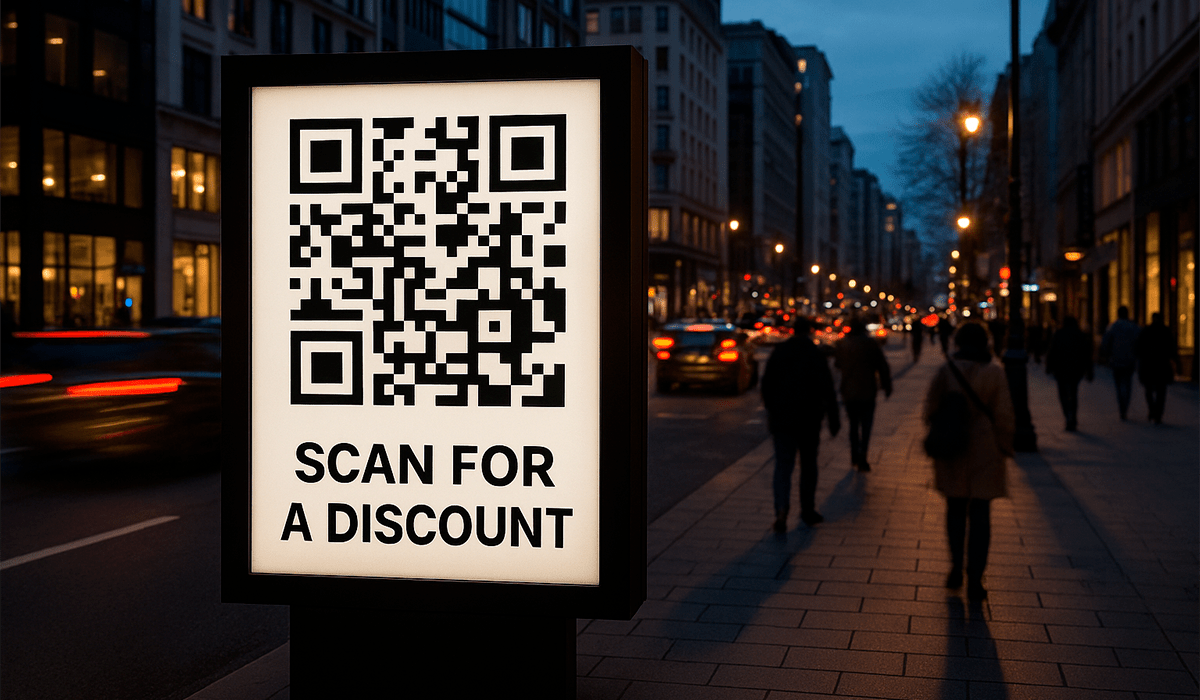
POS zones in stores are an ideal place for a QR. Here, the client stops, has free hands, and at least a little time. Place the code on a price tag, stand, or promotional carrier—and lead the person directly to a landing page, email form, or even an event.
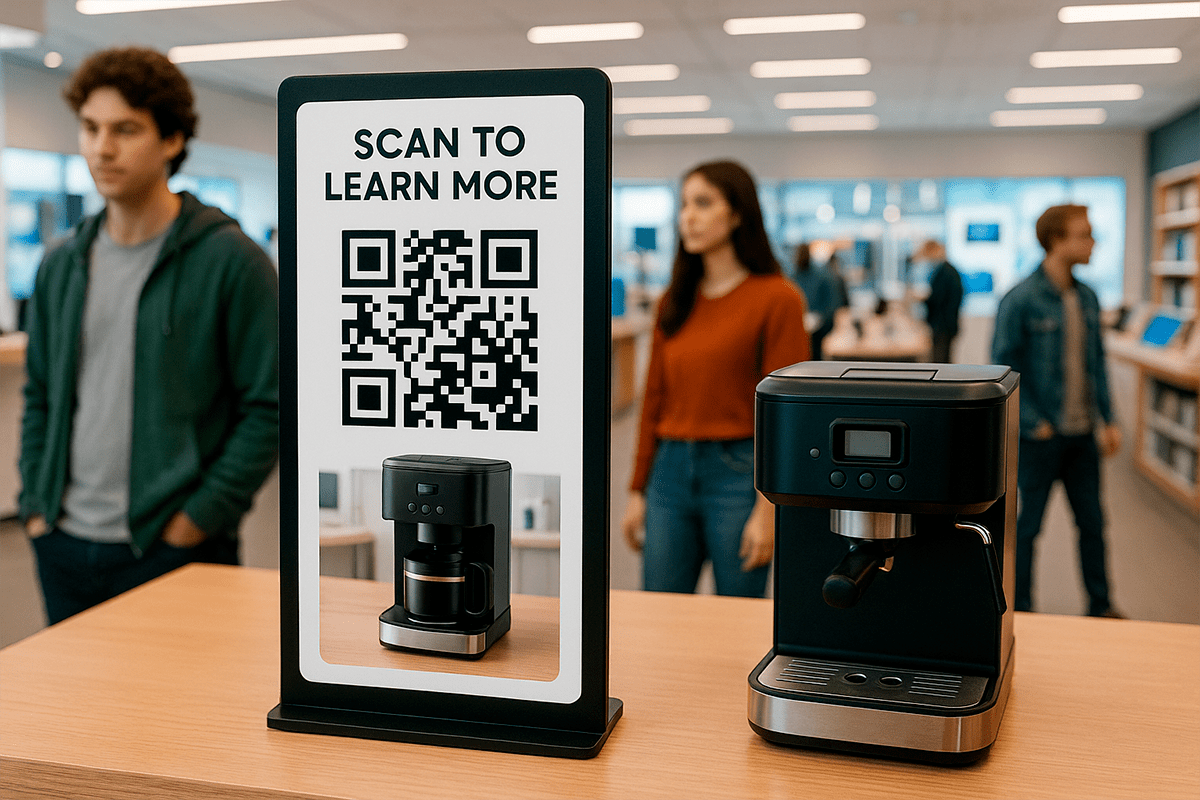
As for storefronts—this is almost always a chance for out-of-hours contact. A QR code on the window enables people to get info even when your store is closed. Menu? Catalog? Submit a request? No problem. Just don’t forget about lighting and direct eye-level placement—somewhere between waist and eye height.
And of course, less obvious formats: metro, transportation, receipts, samples. In the metro—time and a free hand. On the receipt—right after purchase. On a sample—curiosity. A QR code in such places should offer a quick path to action and a clear explanation of why to scan.
All these formats differ, but the principle is the same: if the QR code scans easily, clearly, and leads to something useful—it works. If not—it’s just a decorative square.
Real-Life Examples: How Brands and Small Businesses Use QR Codes Offline
Sometimes the best argument is an example. Below are some real-life situations showing how QR codes truly work in print advertising: in cities, stores, and at events. No theory—just practice.
🎓 Education: QR Code on a University Stand
One Ukrainian university placed a QR code on a banner at the admissions office with the phrase: “Scan to learn about the exchange program”. Scanning took users to a page with participation terms, deadlines, and an application form. Students eagerly used this: even talking to the administration, they asked if they could apply online.
🧴 FMCG: QR on a Hand Cream Sample
In a supermarket, hand cream samples were distributed. On the small sticker was a QR code: “Watch the video review”. The code led to a landing page with a short video and a “Buy with discount” button. This approach felt modern and inspired trust, especially among younger shoppers.
🏪 Retail: QR on a Price Tag in a Mall
An electronics store tested QR codes on stands with products. Each code led to a product page with descriptions, a video review, and a “Consult with us” button. Shoppers could get more info without help from a salesperson—convenient, especially on crowded weekends.
📣 Local Service: Billboard with QR for Online Booking
A hair salon in the city center wanted to simplify booking. On a large billboard were the salon photo, name, and a QR code in the corner that said: “Scan to book online”. The code led to a Google Form. The owners noted that more and more clients were booking visits through this form.

🎁 B2B: QR on a Trade Show Brochure
An IT company at an industry exhibition added a QR code to printed brochures. It led to their portfolio: websites, products, testimonials. Visitors didn’t need to type addresses or search for more info—everything was in their smartphone in seconds. Managers said it made communicating with potential clients easier.
All of these examples are different. In budget, in scale, in purpose. But they have something in common: the QR code is the entry point to digital interaction. Simple in appearance, but strategically sharp.
If you want to try this—check out our QR code generator for websites or QR code for events—and create an active link today.
Static or Dynamic QR Code — Which Is Right for You?
This is one of the most common questions, especially when it comes to printed advertising. At first glance, both codes look the same, but functionally — they are completely different.
Static QR code — created once and printed. It leads directly to the specified address, doesn’t require any online services, and always works. However, you can't change the link or view statistics. It’s ideal for simple tasks: instructions, Wi-Fi, business cards, where nothing changes.
Dynamic QR code — is a tool. You can change the destination page even after printing, add UTM tags, see analytics, and restrict access by time or geo. This is indispensable for campaigns where you need flexibility and control.
In short: static — when you need simplicity, dynamic — when you need strategy. And yes, you can generate both in just a few clicks on FbFast.
🔎 Want to dive deeper? We’ve broken down all the pros, cons, and scenarios in a comprehensive guide: “Static or Dynamic QR Code: What to Choose and Why”.
How to Make a QR Code That Works — and Doesn’t Ruin Your Ad
Creating a QR code takes half a minute. But creating the right QR code that will be readable, look great, and work even a month after printing — that’s a bit trickier. Here’s where the details start to matter.
Size. This is the first thing people forget. A QR code is not just a decorative icon. If it’s printed less than 2.5×2.5 cm, the chances of someone scanning it successfully are tiny. And on a billboard or poster — the scale should let the camera easily “see” the code from 2–3 meters away. Just test it before printing. Yes, literally — print it out and point your camera.
Contrast. Not all QR codes scan equally. If you make a trendy purple code on a pink background — you guessed it: no camera can see it. The standard is a dark code on a light background. Minimal decor. Maximum readability.
Explanation. People scan when they understand why. That’s why an accompanying phrase is crucial. Not just “QR code” but “Scan to get 10% off” or “Go to the catalog”. It gives a hint: “Here’s what happens if you scan.”
Branding. A good QR code isn’t necessarily black and white. You can add a logo, brand colors, change the dot shape or the frame. That way, it looks like part of your branding, not just a random element. But again: don’t go overboard. If you want inspiration — here are examples of branded QR codes.
Dynamic. Already mentioned above, but once again: a dynamic code acts as insurance. Even if you make a mistake with the link, you can change it without reprinting. And if you’re working with multiple channels — you can create variations with UTM and see which code works better.
And finally — always test. Before sending to print, bring the code to life: print, scan, see how it looks in the light. One minute can save you thousands on reprints.
What Not to Do: Common QR Code Printing Mistakes
Even the best idea can “flop” if your QR code doesn’t work. Literally — it’s not scannable, doesn’t lead where it should, or looks out of place in the design. For printed materials, this is especially painful: once printed — there’s no going back.
Here are some of the most common mistakes (which are easy to avoid if you know them in advance):
- Too small size — the code on a business card might scan, but if it’s smaller than your palm on a billboard, there’s no chance.
- Poor contrast — a light code on a light background may look nice, but cameras can't “see” it.
- No caption — a code without explanation is perceived as decorative. People won’t scan “blindly”.
- Placed in a corner, behind glass, or on a fold — even a good code won't help if it’s just hard to aim at.
- No test — the most common: made it, inserted it, sent to print… Only then someone checks and the code leads to a 404.
We’ve covered these situations in detail — with examples, cases, and tips — in a separate article: “Common Mistakes When Creating QR Codes and How to Avoid Them”. If you work with layouts or send anything to print — be sure to check it out.
How to Track the Effectiveness of QR Codes in Print: No Guesswork Needed
You handed out 500 flyers. Printed a billboard. Added a QR code to a box. And... what's next? Did anyone scan it? Did someone visit the website? Did the ad actually work? Without analytics, you’ll never know — it's all just guesses.
This is where UTM parameters come in. These are special tags added to a link that let you know exactly where a user came from. For example:
https://fbfast.io/?utm_source=flyer&utm_medium=print&utm_campaign=spring_sale This kind of link lets you see in your analytics that the visit came from a flyer, specifically from print, and as part of the spring campaign. For a billboard or packaging you simply change the utm_source — and you have a separate branch for each channel.
This is especially convenient if you use a dynamic QR code: you can change the UTM targets even after printing, without creating a new code. And if you also integrate this with QR code analytics — you get the full picture: number of scans, locations, devices, uniqueness.
UTM parameters are the language your QR code “speaks” to tell you where a customer came from. And they’re exactly what allows you to measure the real effectiveness of your print advertising.
What You Can Track with QR Codes on the FbFast Platform
When we say that QR codes provide analytics, we don’t just mean the total number of scans. It’s a whole map of interactions: when, where, with which device, how many times, and even whether it’s a repeat or a first-time scan. And yes, all of this is available in an easy-to-use format right in your FbFast account.
Here are examples of the data you can see in real time:
- 📈 Number of scans: overall and for each code individually.
- 🌍 Geolocation: country, city, even region breakdown — great for local marketing.
- 📱 Device types: iOS, Android, desktop — helps you understand your audience.
- 🕒 Interaction times: by day, hour, peak periods — useful for optimizing campaign timing.
- 🔁 Uniqueness: tracking new and repeat interactions (see how engaging your content is).
And importantly — this data isn’t just “floating in the air.” You can compare it with other channels, integrate with Google Analytics or CRM, and see exactly which codes lead users to conversions.
For example: you run a promotion in both offline stores and online ads. Each QR has its own UTM tag. After a week, you see the billboard in the city center brought fewer visits than the stand by the store entrance. And now you know where to invest next.
A QR code is not just a bridge, it’s also a counter on that bridge. And FbFast lets you read that counter.
If you want to test analytics in action — create a dynamic code with UTM and see how your offline ads “come alive” in numbers.